Home
ABOUT
BIOGRAPHY
WORK
CONTACT

Home
ABOUT
BIOGRAPHY
WORK
CONTACT
スマホでご覧の方は、
画面を横向きにするとより見やすくなります。
Read the passage and choose the best answer among the four choices for each question.
Hurricanes with female names
The name “hurricane” is not often heard in Japan. This is because a hurricane is a large tropical cyclone that occurs around the United States, while in Japan, this tropical cyclone is called a typhoon. The names are not the only difference. A hurricane is defined as a tropical cyclone that occurs in the North Atlantic and North Pacific Oceans and has maximum wind speeds of about 33 m/s or higher. Meanwhile, a Japanese typhoon is a tropical cyclone that occurs in the Northwest Pacific and the South China Sea and has maximum wind speeds of 17 m/s or higher. This means that the criterion of maximum wind speeds of Japanese typhoons is lower than that of hurricanes. This criterion is unique to Japan.
Hurricanes are named in alphabetical order by the National Hurricane Center in Florida after each occurrence. It began in 1950, and at first, the names were not ones of humans, but since 1953, female names have been given. However, since 1979, men’s and women’s names have been used alternately because using only women’s names is a form of gender inequality. At the same time, French or Spanish names were also used.
However, even though naming is supposed to alternate between men’s and women’s names, hurricane damage records show that hurricanes with female names caused a far larger number of deaths and other damage. One of the reasons for this is said to have a great deal to do with the impression one gets from the name. When a hurricane has a male name, it is presumed to be more powerful and people prepare for a certain amount of damage in advance. On the other hand, when it has a female one, it is assumed to be relatively calm and people tend not to take it seriously. In other words, trouble arises if you judge things only by superficial aspects such as names.
Practice!
Q1. What is one way a hurricane is defined?
Q2. What changed about naming hurricanes in 1979?
Q3. Hurricanes with female names are more likely to cause serious damage because
解答
Q1. 4
Q2. 3
Q3. 2
解説
Q1.
第1段落4文目で、ハリケーンの詳細な定義が述べられており、”occurs in the North Atlantic and North Pacific Oceans”とあるので、4が正解。
Q2.
第2段落3文目で、1979年から”men’s and women’s names have been used alternately”となったと説明されており、ハリケーンの命名の際に、男女の名前が交互に使われるようになったことがわかる。
Q3.
第3段落4文目で、女性の名前が付いているハリケーンが起きた際に、人々が”tend not to take it seriously”となると述べられている。つまり、女性名のハリケーンを大事として捉えず、十分な準備をしなくなるということが推測される。よって、解答は2。
解釈
第1段落


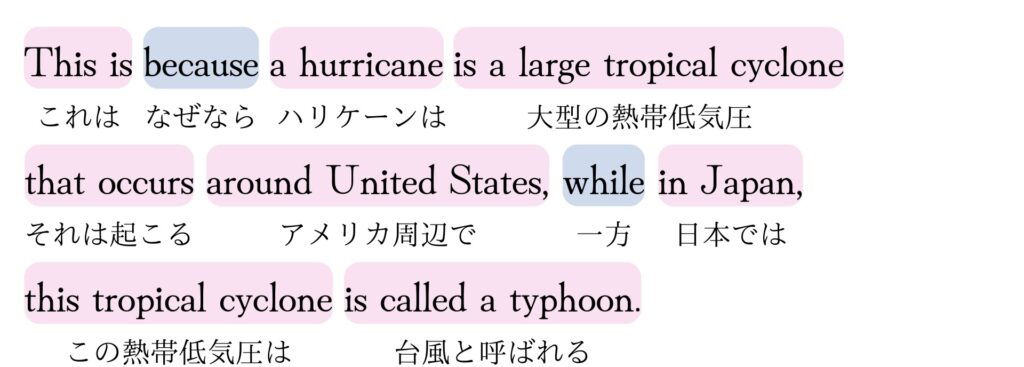



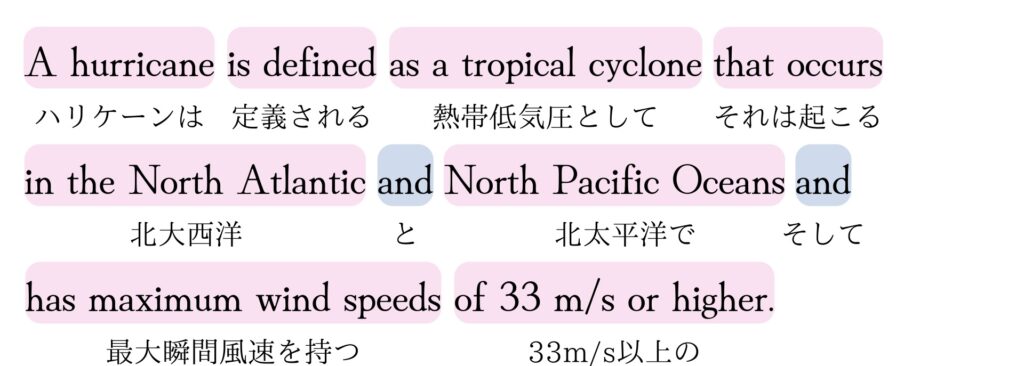

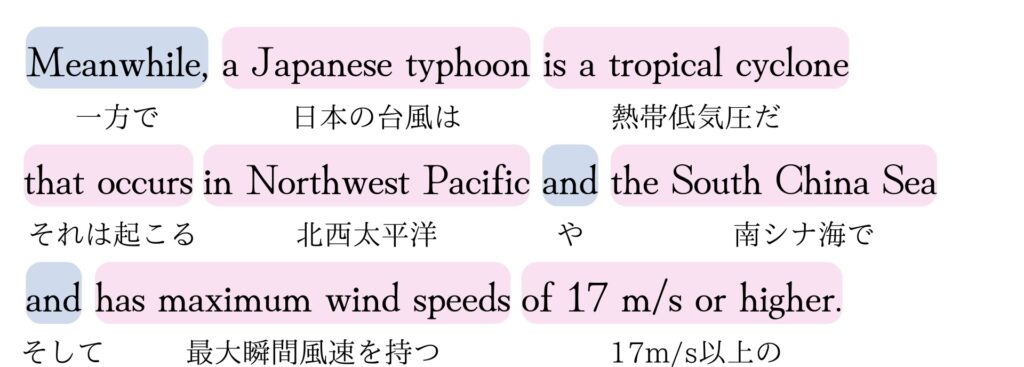





第2段落
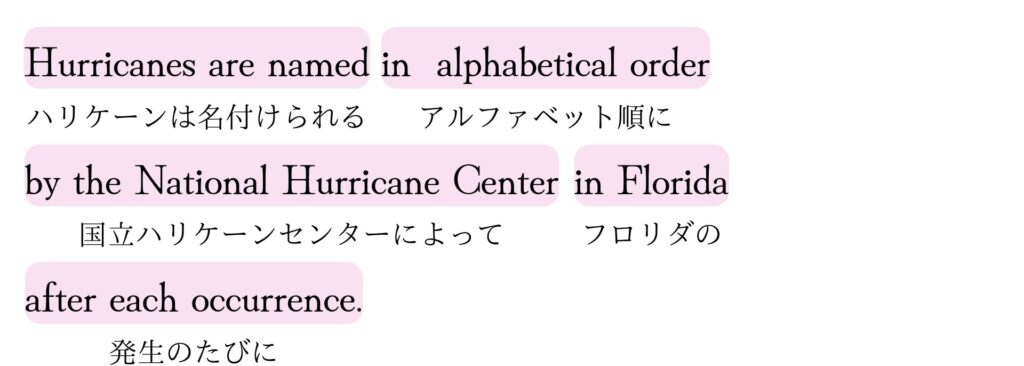

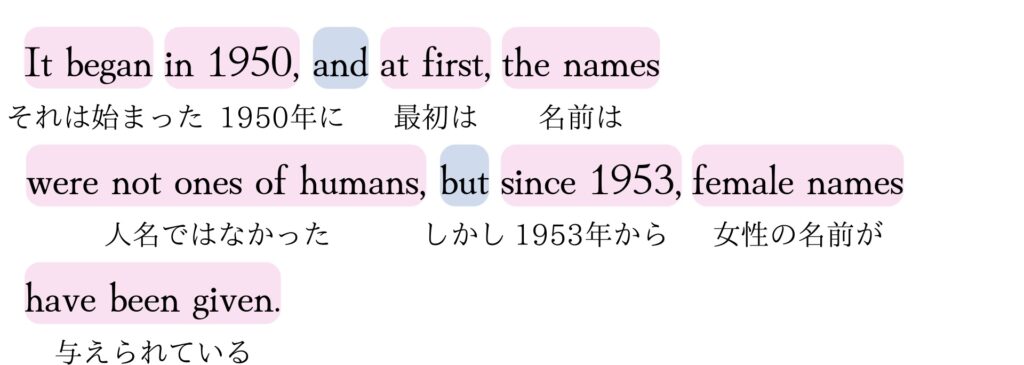

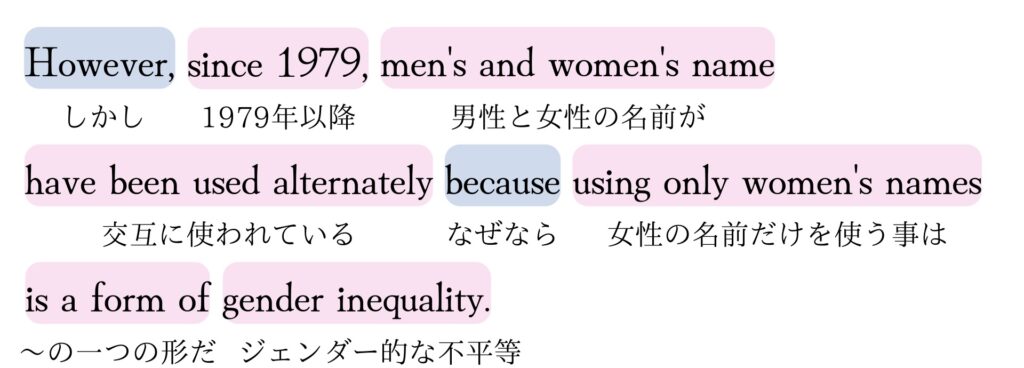



第3段落
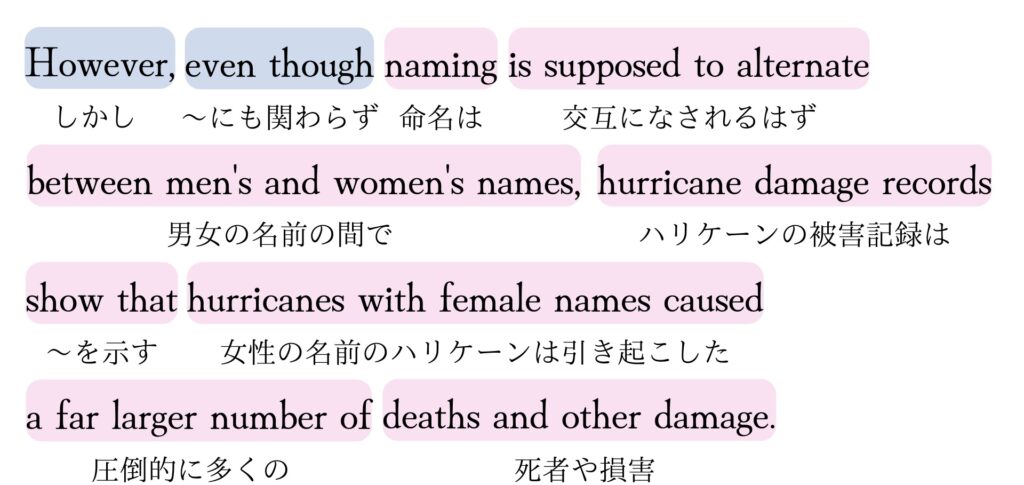
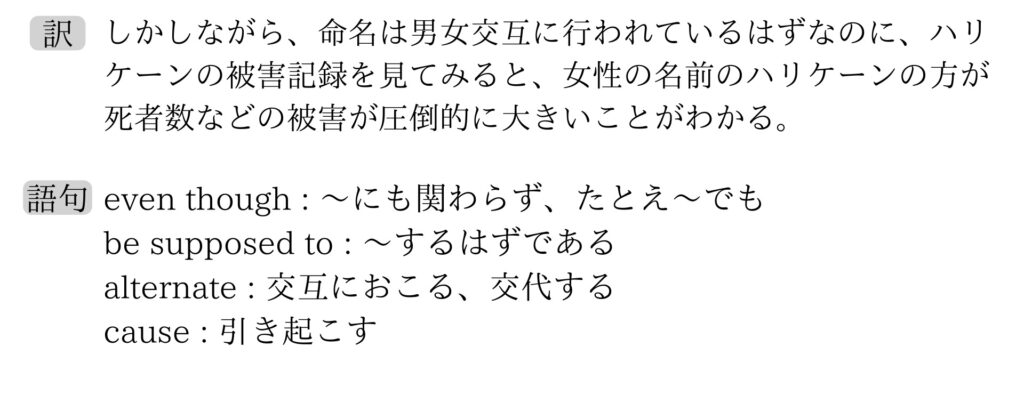
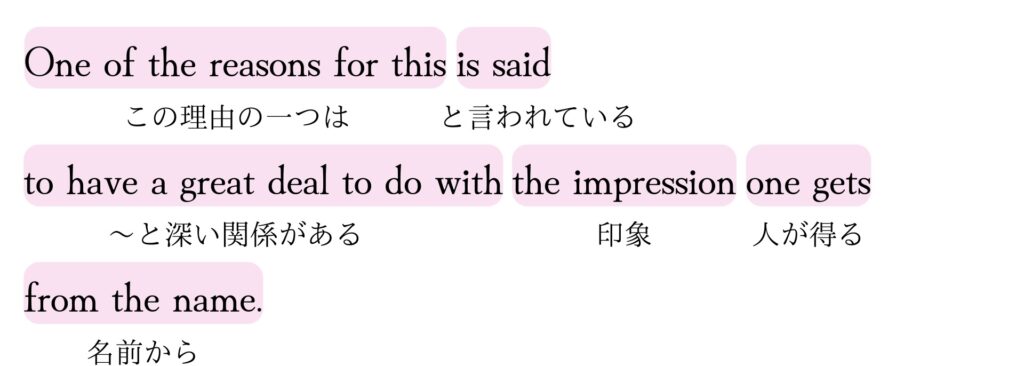

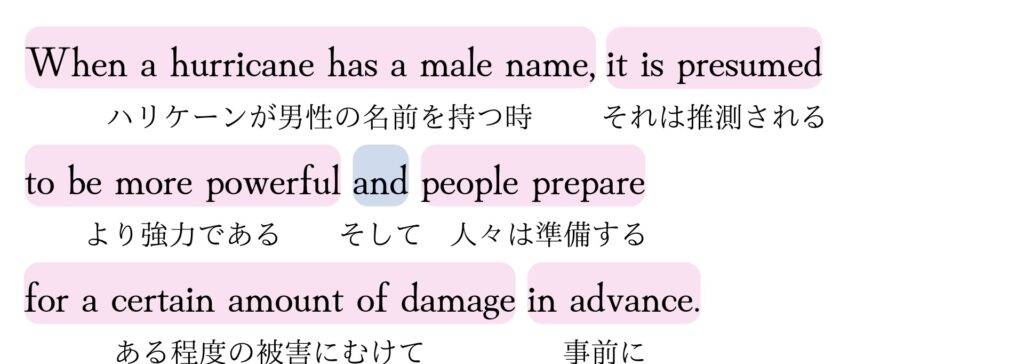





全訳
ハリケーンという名前を日本で聞く機会はそう多くはない。ハリケーンとは、アメリカ周辺で発生する大型の熱帯低気圧のことであり、日本ではこの熱帯低気圧のことを台風と呼ぶからだ。名前だけが異なるわけではない。北大西洋および北太平洋で発生し、最大風速が約33m/s以上の熱帯低気圧をハリケーンと定義している一方で、台風は北西太平洋および南シナ海で発生し、最大風速が17m/s以上の熱帯低気圧のことを指す。つまり、台風の方がハリケーンよりも認定のための風速が低いことがわかる。この台風の認定基準は日本独自のものだ。
ハリケーンは発生するたびに、フロリダ州にある国立ハリケーンセンターによって、アルファベット順に人の名前が付けられる。この試みは1950年から始まり、最初は人名ではなかったが、1953年より女性の名前が付けられることになった。また、同時にフランス語やスペイン語の名前も用いられるようになった。
しかしながら、命名は男女交互に行われているはずなのに、ハリケーンの被害記録を見てみると、女性の名前のハリケーンの方が死者数などの被害が圧倒的に大きいことがわかる。この原因のひとつとして、名前から想像される印象が大きく関係しているという事が言われている。ハリケーンの名前が男性名だと、なんとなく勢いが強そうな感じがして事前にある程度の被害を見越して準備をするが、女性名だと比較的穏やかな印象を受け、災害への備えが疎かになってしまうそうだ。つまり、何事も名前などの表面的な部分だけで判断していたら痛い目を見るということだ。
[swpm_login_form]